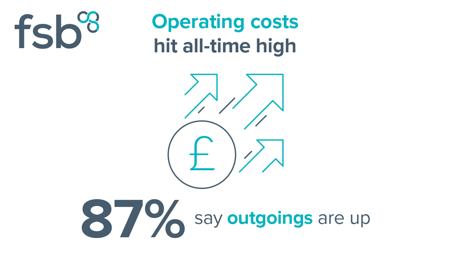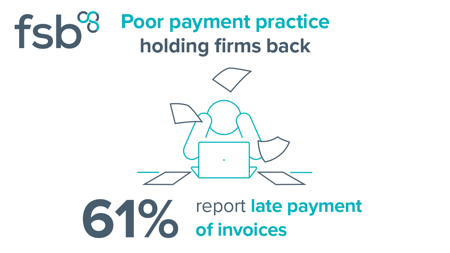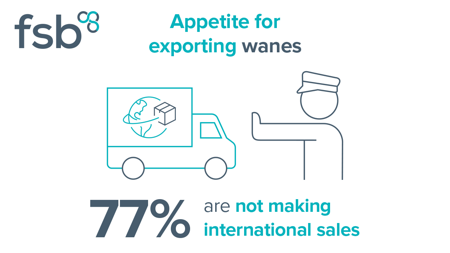Foreword
The first quarter of 2022 has been a study in contrasts. Just when small businesses had regrouped after the Omicron variant of Covid, any precious and precarious equilibrium which had been achieved was then rapidly undermined by a further increase in input prices, and energy and fuel bills. Adding to this uncertainty, the invasion of Ukraine has sent shockwaves through the geopolitical and business environments, along with the terrible humanitarian toll it has taken on the people of Ukraine.
Yet even against this tumultuous backdrop, with spiralling costs taking an especially harsh toll on firms, small business confidence in our headline measure has improved since the end of last year, when it was firmly in negative territory. This can be put down to small businesses being optimistic in nature, which helps them stay resilient in tough times, with half our respondents looking to expand in the near future. The Q1 2022 confidence reading of 15.3 is however some way below its level in the same quarter last year of 27.3; as far as starts to the year go, it could be worse, but it could be a lot better, and possibly presages more turbulence ahead, as do the still-negative readings in important sectors such as manufacturing and wholesale and retail.
The weakness in export growth continues, with this survey marking the twelfth quarter in a row in which the net balance of exports has been in negative territory. International trade remains precarious. While we welcome the news that a fresh round of import checks due in summer will now be delayed, small businesses looking to trade internationally still face considerable challenges.
Economic concerns among the public are high and still rising, as the cost of living crisis intensifies. With discretionary spending falling, and calls for more intervention from the Government to help alleviate the pressure on people’s budgets, the performance of the domestic economy was the most commonly cited barrier to growth among respondents with aspirations to expand, at 58.6%. It is another cause for concern among many others, especially as the Bank of England predicts that inflation has some way higher to go, and could persist at elevated levels for even longer than initially feared. The devastation that inflation at 10% or more for a sustained period of time will cause to small businesses, compounding their input cost woes as already-high prices rise even further, shows the need for further action from policymakers.
Many small businesses find themselves caught in a pincer movement, with rising business and debt costs on one side and falling consumer demand on the other; microbusinesses and sole traders are particularly vulnerable, as they face a hike in the cost of everything from their mortgage to the cost of a tank of petrol, and their weekly supermarket shop. This survey was also undertaken before the impact of the 1.25 percentage point rise in all types of National Insurance contributions was felt by employers, employees, and sole traders. A big victory for small employers was included in the Spring Statement in late March, however, as FSB’s lobbying led to a much-needed £1,000 increase in the Employment Allowance, giving small employers £5,000 of relief – it’s vital that every small employer makes sure their payroll software has the right box ticked so they get this help.
Government can and should do more to target support at the smallest firms most in need: increasing the rateable value ceiling for small business rates relief, installing a sick pay rebate for small firms, and extending the support offered with energy costs through the council tax system to micro businesses via the rates system. It must also go further to eradicate a worsening culture of poor payment, too – eradicating this corporate scourge would come at no cost to the public purse and only massive gain to the business community and to society as a whole.
Key statistics

Operating costs are at an all time high with 87% of businesses reporting outgoings are up.

Poor payment practice is holding firms back with 61% of businesses reporting late payment of invoices

The appetite for exportinghas waned with 77% of businesses reporting they are not making international sales.
Key findings
The majority of UK regions saw a positive reading on the SBI in Q1, marking a reversal of fortunes compared to Q4 2021, when most regions saw scores below zero. Only the South West saw a negative reading in Q1, while London was by far the strongest performer.
There was a quarterly improvement in the SBI reading for all major industries in Q1 2022. Nevertheless, some industries still saw negative SBI readings, notably manufacturing and wholesale and retail. The negativity in these sectors reflects several headwinds for the UK economy, including continued supply chain pressure and the cost-of-living crisis.
The net balance of small businesses reporting revenue growth over the previous three months stood at 11.1% in Q1. This positive figure reflects the continued economic recovery at the aggregate level and subsequent impact on business revenues.
The net balance of exporting businesses reporting growth in the value of their exports stood at -5.3% in Q1. This marked the twelfth consecutive quarter for which the net balance of exports has stood below zero. The fact that the net value of export growth remains in negative territory highlights the unfavourable conditions still faced by exporters.
Seven in eight businesses (86.7%) reported increased costs compared to a year ago in Q1, while just 3.0% reported a decrease. Respectively, these figures represent a series high and a series low, highlighting the widespread nature of cost pressures at present. Businesses in manufacturing, which have been particularly exposed to mounting input prices, were the most likely to report upward cost pressures.
Price pressures are being driven by commodities, and this is reflected by the fact that fuel and utilities were the two most commonly cited sources of cost pressures amongst SBI respondents in Q1. Three in five businesses (60.1%) selected fuel as a driver of costs in Q1, up from 45.6% in Q4 2021. Utilities were selected by 58.0% of respondents, up from 44.8% in Q4.
Growth aspirations were less widespread in Q1 than in the previous quarter (Q4 2021), with the proportion of firms seeking to expand falling from 54.1% to just 50.3%. Nevertheless, the net balance of firms aspiring to grow is now roughly in line with pre-Covid levels, having initially slumped during the early stages of the pandemic, before seeing significant gains in 2021 upon the reopening of the economy.
The most commonly cited potential barrier amongst those aspiring to grow was the domestic economy, being reported by 58.6% of respondents. This reflects the generally worsening outlook for the UK economy, with aggregate growth set to slow significantly on the year.
The proportion of small businesses applying for credit fell for a seventh consecutive quarter in Q1 2022. Just 9.1% of respondents stated that they had applied for credit for business purposes in the past three months, the lowest share in the SBI’s history. Credit has become less affordable and less widely available in recent months.
Businesses’ investment intentions slipped in Q1 2022. This likely stems from the weakening economic growth outlook as well as less favourable credit conditions.
Download the full report
Download your copy by clicking below to read our full analysis and research.






